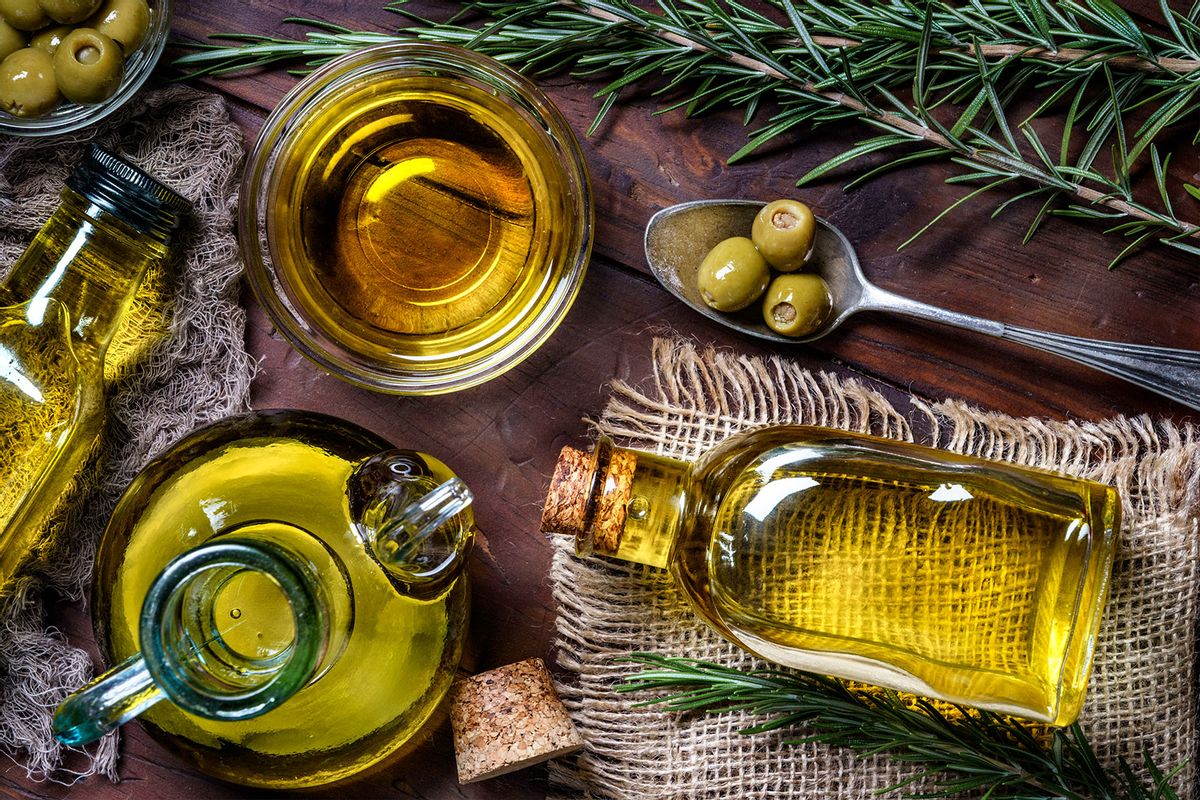I sat beside a row of small cups, their green bowls disguising the colors of the earthy olive oil within. Cristina Stribacu, founder of LIA Extra Virgin Olive Oil in Messenia, Greece, was leading me through an olive oil tasting that was about to reveal just how much I didn’t know about the staple that sits on my countertop, an open spout making for easy pours (the first of many mistakes I would soon correct.)
Greece is the world’s leading producer of extra virgin olive oil, or EVOO. A bowl of golden goodness extracted from robust, green olives is ubiquitous at every table, three meals a day. To be designated EVOO, the oil must be entirely natural — no chemicals or artificial additives — and pass a stringent sensorial analysis.
That analysis is based on aroma and flavor, determined the same way Stribacu taught me — a third-party panel of tasters warms the cup in the palms, breathes in the aroma, then sips while inhaling through the teeth, a technique that draws out the flavors within the oil.
It’s reminiscent of a wine tasting, save one variable — color. Olive oil can range from vibrant green to golden yellow, and the hue has nothing to do with quality. Variations in shade simply reflect the amount of chlorophyl present when the olives are harvested.
Stribacu says that while color does not directly affect taste, “certain color profiles may be associated with particular flavor characteristics. For example, greener oils can have more robust, grassy, or peppery notes, whereas golden oils might taste more like flowers, exotic fruits, and herbs.”
We need your help to stay independent
How to properly store olive oil
While the color of fresh olive oil does not connote quality, the color change as it sits on a shelf does.
When olive oil is exposed to fluctuations in temperature, light and air, which oxidizes the oil to its detriment, its quality diminishes. Left too long in that environment, it will eventually turn rancid. If your oil appears to have darkened and has developed a bad smell (some compare it to wet cardboard), it’s time to toss it. It won’t make you sick, but it won’t taste good either.
Stribacu adds that keeping oil fresh is important to preserving its health benefits. “EVOO is packed with heart-healthy monounsaturated fats that can help lower bad cholesterol levels,” she says. “It also contains polyphenols and antioxidants that provide anti-inflammatory benefits. Proper storage is crucial to getting the most out of your olive oil.”
She suggests keeping your oil in a cool, dark place, ideally between 57 and 64°F. Always use dark glass bottles or tins to block out light. Sorry, but it’s time to say goodbye to the clear glass bottle on your countertop. Always keep the container tightly sealed to minimize contact with air – if your dispenser bottle has an open spout, your oil will degrade faster. And while it seems strategic to keep your EVOO close to your stove, you’ll want to avoid placing it anywhere near a heat source, including a countertop that is exposed to sunlight.
Olive oil is best used within 12 to 18 months of production. When you purchase your bottles, check harvest dates or best-by dates to ensure you’re getting the freshest oil possible. While olive oil can remain good for up to six months, try to use an open bottle within one to three months for maximum freshness and flavor.
Unique ways to use olive oil for cooking and finishing
Let’s debunk a myth right now. You do not need different EVOOs for cooking and finishing. Quality EVOO you may be inclined to reserve for a salad is also suitable for cooking. It has a smoke point between 375 and 410°F, which is more than sufficient for most cooking methods, including sautéing, roasting and grilling. As Stribacu says, “Don’t fall for the marketing that insists you buy different bottles for different purposes.”
"Take good care of this Greek staple, and it will take good care of you."
Small batch EVOOs made from olives that come from a single location picked at the same time tend to be more robust than mass-produced bottles, which typically blend oils of varying quality. A good EVOO has complex flavors that can elevate any dish. Think simple stir-fries, roasted vegetables, fried eggs, or the traditional Greek dishes under the Ladera (meaning “in oil”) umbrella, like a delectable combination of vegetables, rice and herbs. “Unlike some refined oils, which may lose their flavor when heated, the EVOO flavor profile is enhanced in heat, and dishes develop a more rounded taste,” says Stribacu.
As a finisher, olive oil really shines. Greek salad just wouldn’t be the same without its fresh tomatoes, bell peppers and cucumbers complemented by a pungent, olive-forward EVOO. Drizzle that same oil over fish right off the grill – the heat from the fish extracts an entirely different and oh-so-delicious flavor palate.
And here’s something not many cooks know: Cold also brings out dimensions of EVOO that intensify aromas and tastes. One of Stribacu’s favorites? Vanilla or dark chocolate ice cream dotted with olive oil.
As they say in Messenia, a perfect dinner calls for three things: good friends, old wine, and always fresh EVOO. Take good care of this Greek staple, and it will take good care of you.
Read more
about this topic



Shares